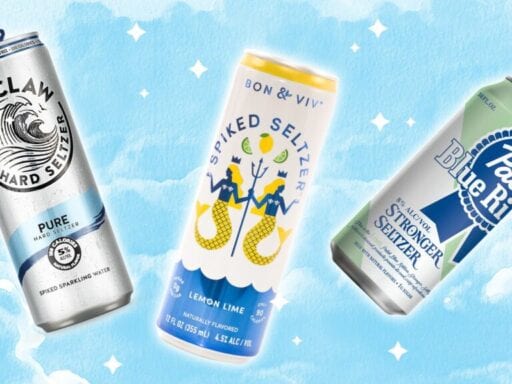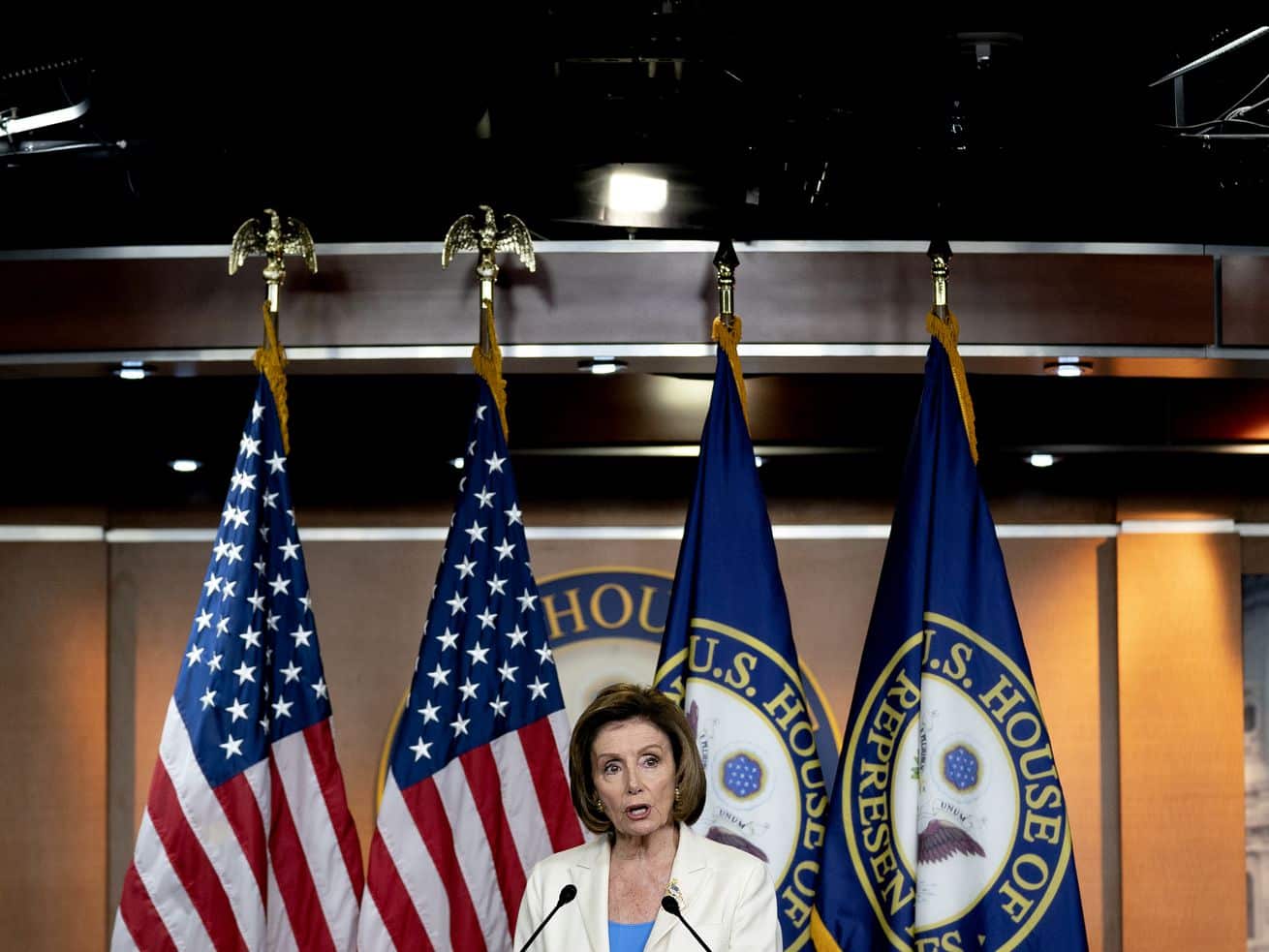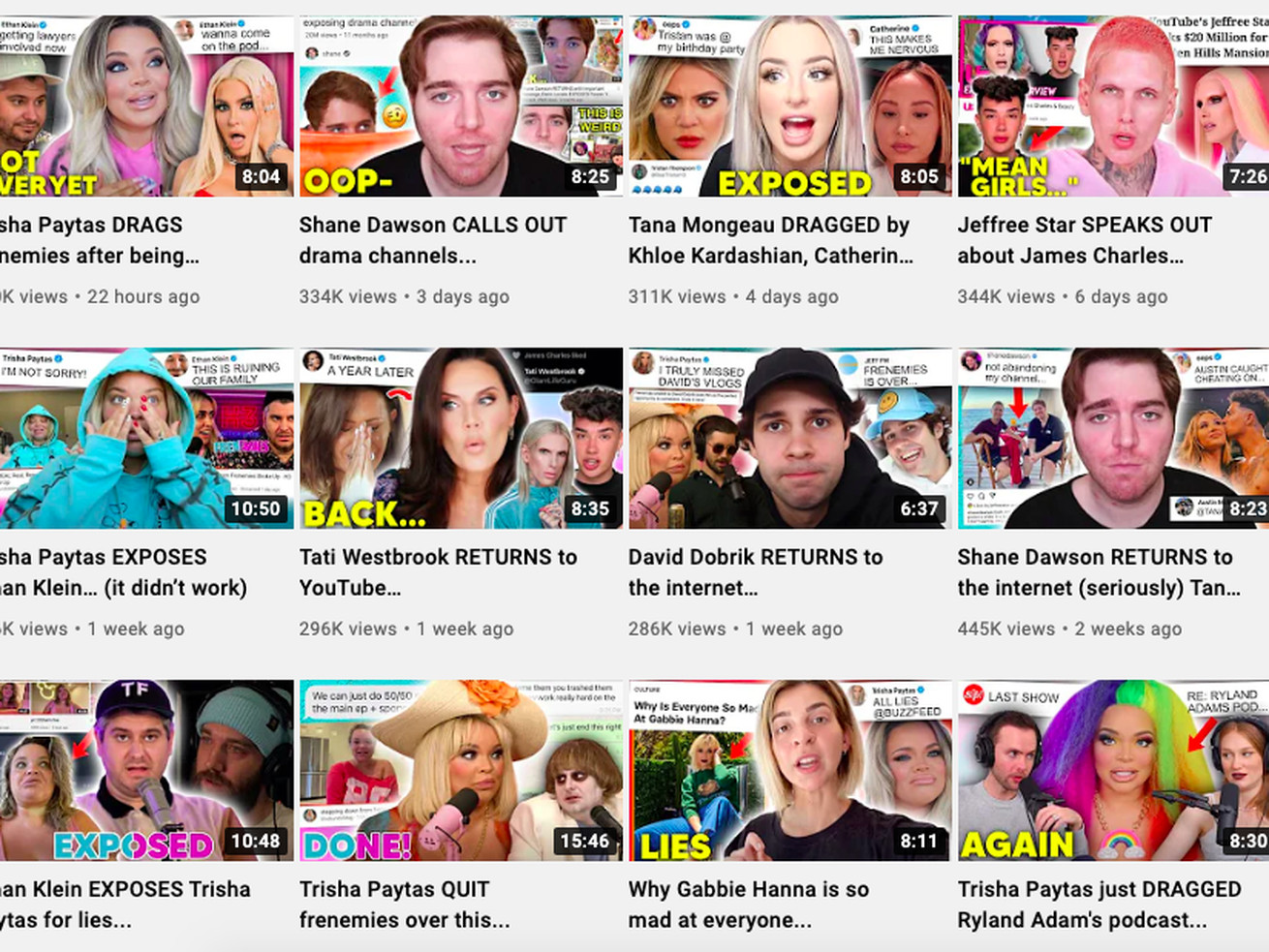It’s the unofficial drink of summer 2019, but the cheap, low-cal, gender-neutral canned cocktail has serious staying power.
Hard seltzer requires almost zero explanation. It’s water with bubbles that also has alcohol in it. Even its meteoric rise over the past few months needs little parsing: Seltzer has been very popular for a while, and now this is seltzer that gets you drunk. But it’s a beverage whose existence makes so much sense for so many reasons, and feels so perfectly positioned in this particular period of time, that it has helped define what exactly this period is.
It is difficult to overestimate the hugeness of hard seltzer to people who study the business of alcohol, but here are some exact figures: Hard seltzer is currently a $550 million business and is projected to keep growing, with one UBS analyst estimating to Business Insider that it could be worth $2.5 billion by 2021. Sales of hard seltzer have grown about 200 percent over the past year, with 164.3 percent of that growth occurring in July alone, according to Nielsen.
/cdn.vox-cdn.com/uploads/chorus_asset/file/19038291/GettyImages_1153557290.jpg) Abel Uribe/Shannon Kinsella/Chicago Tribune/TNS via Getty Images
Abel Uribe/Shannon Kinsella/Chicago Tribune/TNS via Getty ImagesHalf of those sales are concentrated on a single brand: White Claw, which is owned by Mark Anthony Brands, the owner of Mike’s Hard Lemonade. It and the next leading brand, Truly, which is owned by Boston Beer Company, together make up about 85 percent of total hard seltzer sales. As of this year, every major beer company has at least one hard seltzer on the market, as beer continues to lose market share in favor of less alcoholic, less caloric options.
If there’s one thing people love more than hard seltzer, it is talking about how big hard seltzer is. Industry experts and retail trend professionals have spoken to pretty much every publication about hard seltzer’s skyrocketing popularity. “This is not a fad,” Ricardo Marques, vice president of core and value brands at Anheuser-Busch, told CNN. “This is here to stay.”
But more than that, hard seltzer is something of an aesthetic movement, complete with its own kind of culture: There are catchphrases — “Ain’t no laws when you’re drinking Claws” — and memes (it’s a White Claw summer, baby!), all with perfectly portable, Instagrammable cans. It’s undeniable: Hard seltzer is the drink of summer 2019.
a stranger yelled “white claw summer!” to me across the pool. as much as i wanted to be all “i don’t know you” i had to raise my lime claw and agree that it is indeed, white claw summer
— Harry Lyles Jr. (@harrylylesjr) July 27, 2019
How did we get here? Wasn’t it supposed to be a hot girl summer? (Yes, it is also that!) Here are all of your hardest questions about hard seltzer, explained.
What is hard seltzer, and why is everyone freaking out about it?
At its most basic level, hard seltzer is seltzer with alcohol in it. What that alcohol is made out of can differ — usually it’s just fermented cane sugar with added fruit flavors, but sometimes, like other “flavored malt beverages” such as Bud Light’s Lime-A-Ritas, it uses malted barley. Most hard seltzers’ alcohol content hovers between 4 and 6 percent alcohol by volume (ABV), which is about the same as a light beer.
Hard seltzer is also not new. In fact, the first big hard seltzer brand arrived when many of today’s hard seltzer drinkers weren’t even born yet. In 1993, Coors introduced a drink called Zima, as a response to popular similarly low-ABV beverages like wine coolers. Yet Zima, despite strong sales and nearly half of American alcohol drinkers having tried it, was met largely with ridicule: David Letterman, for instance, made a habit of parodying it as a drink for effeminate weirdos.
Zima left the shelves in 2008 and, despite a brief resurrection in 2017, is now no longer in production (you can still get it in Japan, though). The new class of hard seltzer arose in 2013 with a brand aptly named SpikedSeltzer, when two men in Boston, inspired by their wives’ love of sparkling water, decided to home-brew an alcoholic version. Though the founders told MarketWatch that when they originally tried to sell their product, retailers were in “total confusion” about what to do with it, they eventually sold more than a quarter-million cases in 2015, and by 2016, it had been acquired by Anheuser-Busch (SpikedSeltzer has since rebranded as Bon & Viv).
Today, there are dozens of similar brands, from White Claw to Truly, Henry, Nauti, and Press. And as of this year, most major beverage companies have their own offerings: PBR recently announced its 8 percent ABV Stronger Seltzer, while Four Loko topped it with a 14 percent offering that comes in flavors like “Sour Blue Razz.” Natty Light also just debuted a much-hyped seltzer that even has its own GIFs on Instagram Stories (one of them features a White Claw pouring itself into a dumpster). And earlier this year, both Bud Light and Corona came out with seltzer-adjacent lighter, fruitier versions of its flagship beverages — Bud Light with a line of Ritas Spritz, and Corona with Refrescas.
/cdn.vox-cdn.com/uploads/chorus_asset/file/19038251/image001__1_.png) Natural Light
Natural LightNone of this explains why these things are so popular, though. Hard seltzer became the drink of summer because it exists at the crossroads of a handful of current consumption trends.
Hard seltzer is “healthy” … sort of
It’s not a coincidence that hard seltzers arrived on grocery store shelves at the same time LaCroix became a strange kind of status symbol. In 2015, Mary H.K. Choi wrote a Letter of Recommendation about LaCroix in the New York Times, calling them a “guilt-free,” not-too-sweet nor too intense burst of “unmistakable joy,” dressed up in a hideous can.
At the same time, more Americans were giving up soda, and waiting for them on the other side was flavored seltzer, which didn’t have the sugary sweetness or the calories that came with it. By 2017, sales of seltzer had risen 42 percent over the previous five years, with no slowdown in sight.
LaCroix’s moment in the sun didn’t last long — by 2019, its parent company’s sales had dropped 62 percent over a year due to increased competition from brands like Spindrift. But seltzer continues to be a drink favored in office refrigerators for its better-for-you blandness and ability to be shorthand for an identity (are you a pamplemousse person or a peach-pear?). Hard seltzer mimics the flavors drinkers already know and love, like black cherry, raspberry, and lime.
/cdn.vox-cdn.com/uploads/chorus_asset/file/19038299/GettyImages_506490256.jpg) Vivien Killilea/Getty Images for EcoLuxe
Vivien Killilea/Getty Images for EcoLuxeThat hard seltzer has a relatively low ABV and little or no additional sugar allows most versions to remain in the 100-calorie range, which is pretty much as low as you can go if you’re drinking alcohol (a shot of vodka, for example, has about the same number of calories). It is also what’s allowed hard seltzer brands to market their product as adjacent or somehow contributing to the idea of “wellness,” because it at least has fewer calories than a real cocktail. It’s like Halo Top ice cream: not as delicious as the real thing, and not actively good for you, but branded with the veneer of a healthier option that comes in handy single-portion servings.
As Jaya Saxena notes in an Eater piece on hard seltzer and wellness, alcohol is often considered a vice. But marketers are now touting low-ABV beverages as healthy enough to use as a workout recovery tool, or as compliant with trendy diets like keto or Paleo. “This makes sense from a business perspective,” she writes. “‘Wellness’ is for financially secure people with time to spare — on their skin, on their bodies, and on their diets.”
Calories aside, many millennials are trying to cut down on drinking or identify as “sober-curious,” leading to a rise in low- or zero-alcohol beverages, a category that’s expected to grow by 32 percent between 2018 and 2022. There are now nonalcoholic bars and even sober influencers, and, in short, a seemingly greater interest in making drinking less of a central role in social life. What’s more innocent-sounding than seltzer?
The irony, of course, is that alcohol isn’t actually good for you and neither is seltzer (it kind of rots your teeth!), which only exposes the fact that current wellness trends basically boil down to the same thing diet culture has been aimed at for centuries: fat loss.
Hard seltzer is easy and cheap, but also kind of fancy?
In a Nielsen survey, more than half of respondents said they bought ready-to-drink canned cocktails because they were “convenient.” The second most popular response was that customers liked that they could pick them up in the grocery store: Hard seltzer’s low ABV content allows it to be sold anywhere you can buy beer. (Laws about where you can buy alcohol vary by state; in New York, for instance, wine and spirits can only be purchased in liquor stores, and you can only buy beer at grocery and convenience stores.)
To be fair, it’s not only hard seltzer that’s benefiting from its canned-ness; canned wine has been an increasingly popular choice over the past few years, and ready-to-drink cocktails in Instagram-friendly cans like Mezzo Spritz and Pampelonne are all over grocery store aisles. Cans are far more low-maintenance than glass: Not only are they more portable, but you can bring them to the beach or the park disguised as regular soda, no corkscrew needed.
Oh, and hard seltzer is cheap. A 12-pack of White Claw retails for about $15, which is about the same price as a 12-pack of domestic light beer. It’s one of the most accessible ways to get a buzz, while also carrying a veneer of something a little bit fancy.
As Fortune writes, “Unlike others that appear on the [flavored malt beverage] scene, such as hard root beer or Four Loko, hard seltzer has a certain amount of ‘premiumization’ going for it (yes, that’s affordable luxury you’re tasting).” Hard seltzer doesn’t have the syrupy sweetness of a Mang-O-Rita, and therefore feels more expensive — even though the two drinks are actually about the same price.
Hard seltzer is gender-neutral
That fanciness has also historically given hard seltzer a certain feminization so often associated with fruity, lower-ABV beverages — think wine coolers, sangria, or Smirnoff Ice. But now that’s changing.
As one self-identified bro told Business Insider, White Claw is “ridiculously good. If I’m at a party now and someone offers me an IPA or a White Claw, I definitely take a White Claw … I do dude things and get stoked and all that. But I also just feel comfortable saying I like White Claw and that it’s good.”
3 months ago any girl drinking a white claw got their entire existence roasted by the same guys now posting snap stories saying “ain’t no laws when you’re drinking claws”
— marystebbins (@marystebbins_) July 26, 2019
In an exploration of hard seltzer and gender for Eater, Amy McCarthy argues that instead of targeting the drink on the basis of sex, hard seltzer is selling a lifestyle — one that isn’t dependent on gender. It’s a drink for doing summertime things: concerts, beaches, and boating. The fact that it’s considered more upscale than other malt liquor offerings (you can buy it at Whole Foods, for instance) helps sell it as aspirational.
There is a not-insignificant amount of irony when we talk about hard seltzer — for all its supposed aspirational qualities, you’re still drinking malt liquor out of a can — but particularly in the way men talk about it. In consuming a historically feminine-coded beverage, straight men often will counter it with hypermasculine language (the tagline, “No laws when you’re drinking Claws,” which comes from a YouTube parody of a bro who’s obsessed with hard seltzer, is an example).
There’s a performative aspect of men’s somewhat ironic enthusiasm for hard seltzer, too: In doubling down on how much they love it, men get to embrace something they’re usually discouraged from enjoying. Today’s male hard seltzer drinkers are just as aware of their chosen drink’s reputation as they were in the Zima days, but the difference is that in 2019, it’s far more culturally acceptable to embrace it.
“The success of White Claw … [is] indicative of the 2019 type of hypermasculinity that is currently en vogue,” McCarthy writes. “It’s a drink for a more evolved bro, the type of man who isn’t afraid to talk about his macros or brew kombucha. The rise of crossfit alongside paleo and keto diets gave men permission to be more publicly and proudly health and image conscious than most of their predecessors.”
Which isn’t to say that smart branding by powerful beverage corporations has successfully solved gender inequality, of course. It’s just that hard seltzer happens to fit neatly into society’s current ideas about men’s consumption habits.
Hard seltzer is fine
Finally, and perhaps most importantly, hard seltzer is fine. You can love hard seltzer for its portability and novelty, but no one really loves hard seltzer for the way it tastes. There is always going to be a far more delicious way to get drunk: Hard seltzer is never truly enticing in the way a dry rosé with an ice cube in it next to a pool can be, nor as soul-hugging as a bready IPA in an air-conditioned brewery. And that’s not even including the kinds of alcohol that are essentially just dessert!
Conversely, it’s difficult to really despise hard seltzer, because there’s barely anything in it to hate. It is, in short, the most inoffensive way to consume alcohol. As one 30-year-old advertising creative in Brooklyn told W Magazine, she loves hard seltzer because “they go down super easily and then suddenly I’m drunk. They’re also great for the beach, and White Claw is the best brand. And I fully acknowledge being basic when I drink them. They’re also good mixers, I like adding tequila to mine.’”
There will always be a summer drink. Last year it was the Aperol spritz; for the few years before that, it was rosé; next year, maybe it will be rosé-flavored vodka. But despite its just fine-ness, hard seltzer may have the most staying power out of all three: It’s cheap, it’s easy, and it has a sense of humor about itself, making it slightly more immune to derision. And the fact that it’s lightly flavored makes it a perfect mixer come holiday season (so far, there is no pumpkin spice hard seltzer, but Bon & Viv does have a cranberry flavor). You might never truly love it, but hard seltzer will likely always be there, right next to the grocery store checkout aisle, waiting for someone to pick it up with a shrug.
Sign up for The Goods’ newsletter. Twice a week, we’ll send you the best Goods stories exploring what we buy, why we buy it, and why it matters.
Author: Rebecca Jennings
Read More



